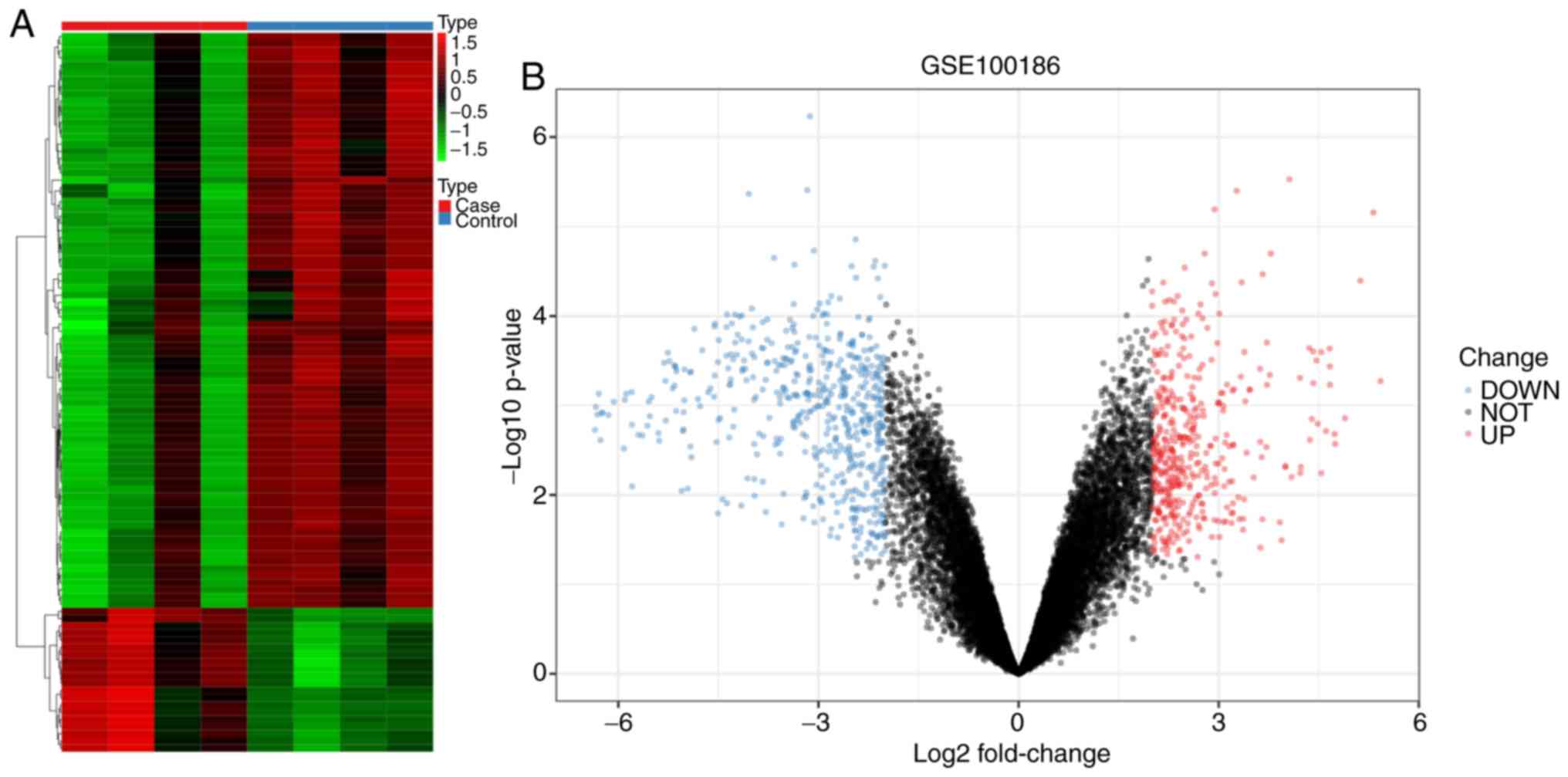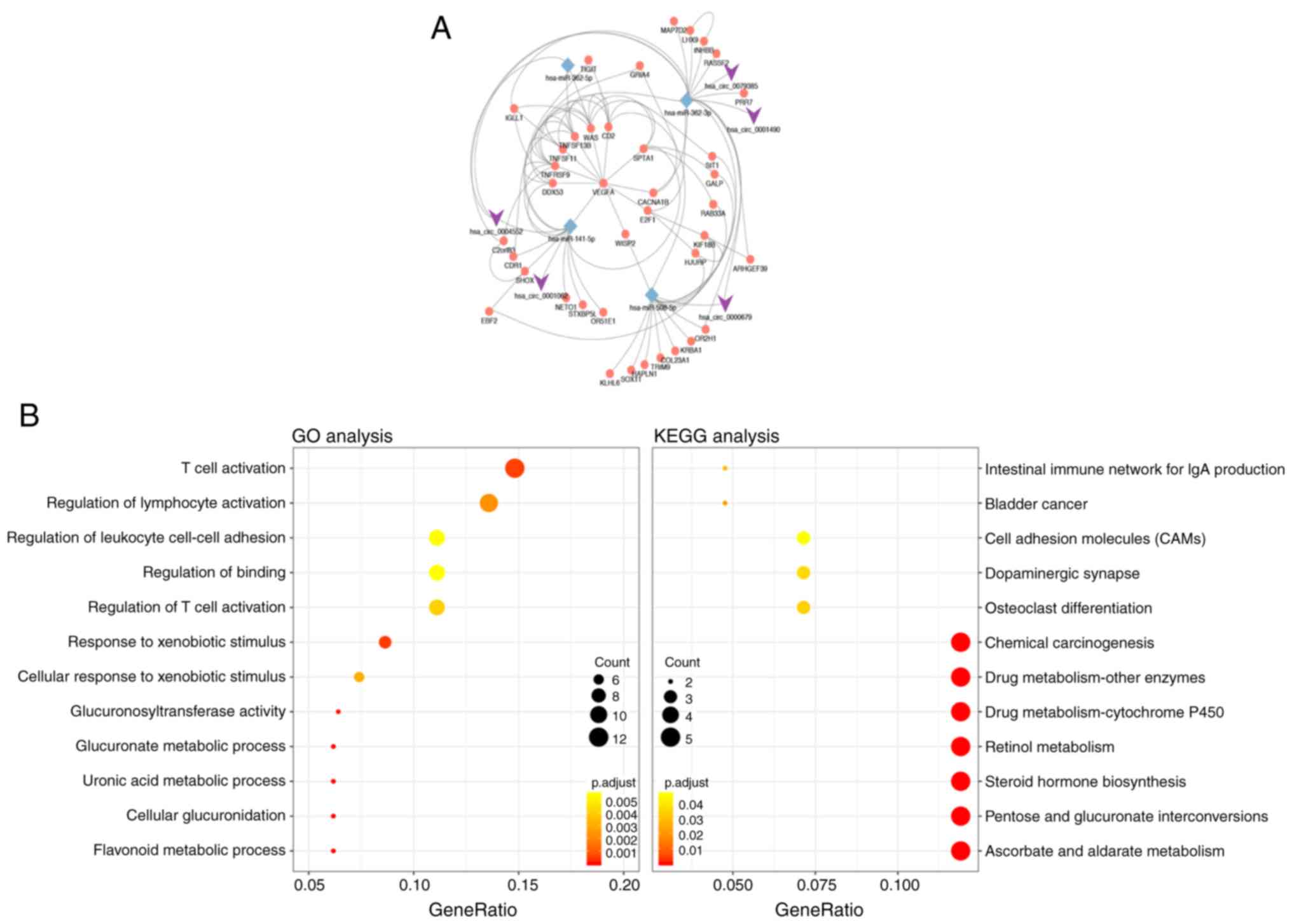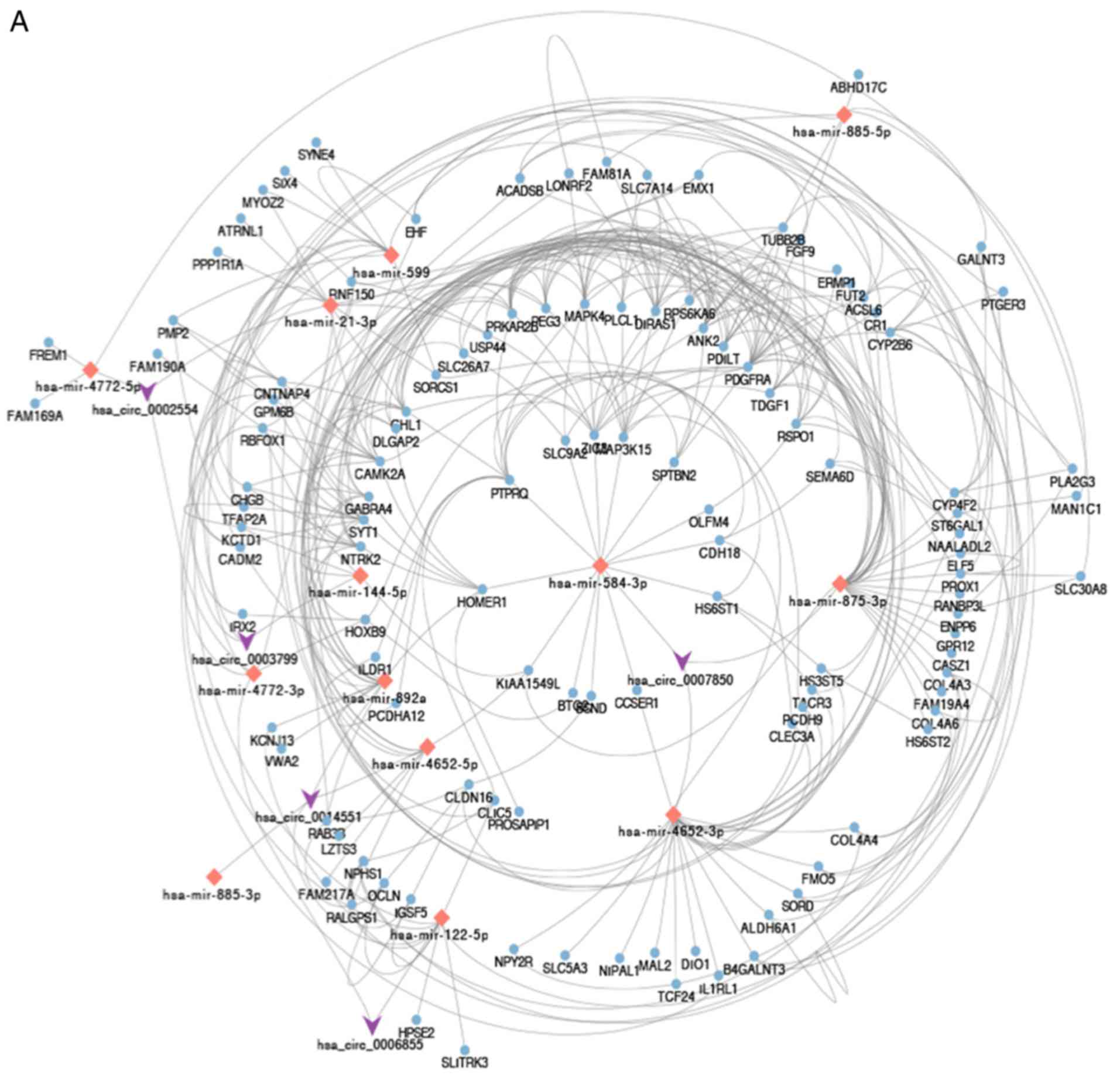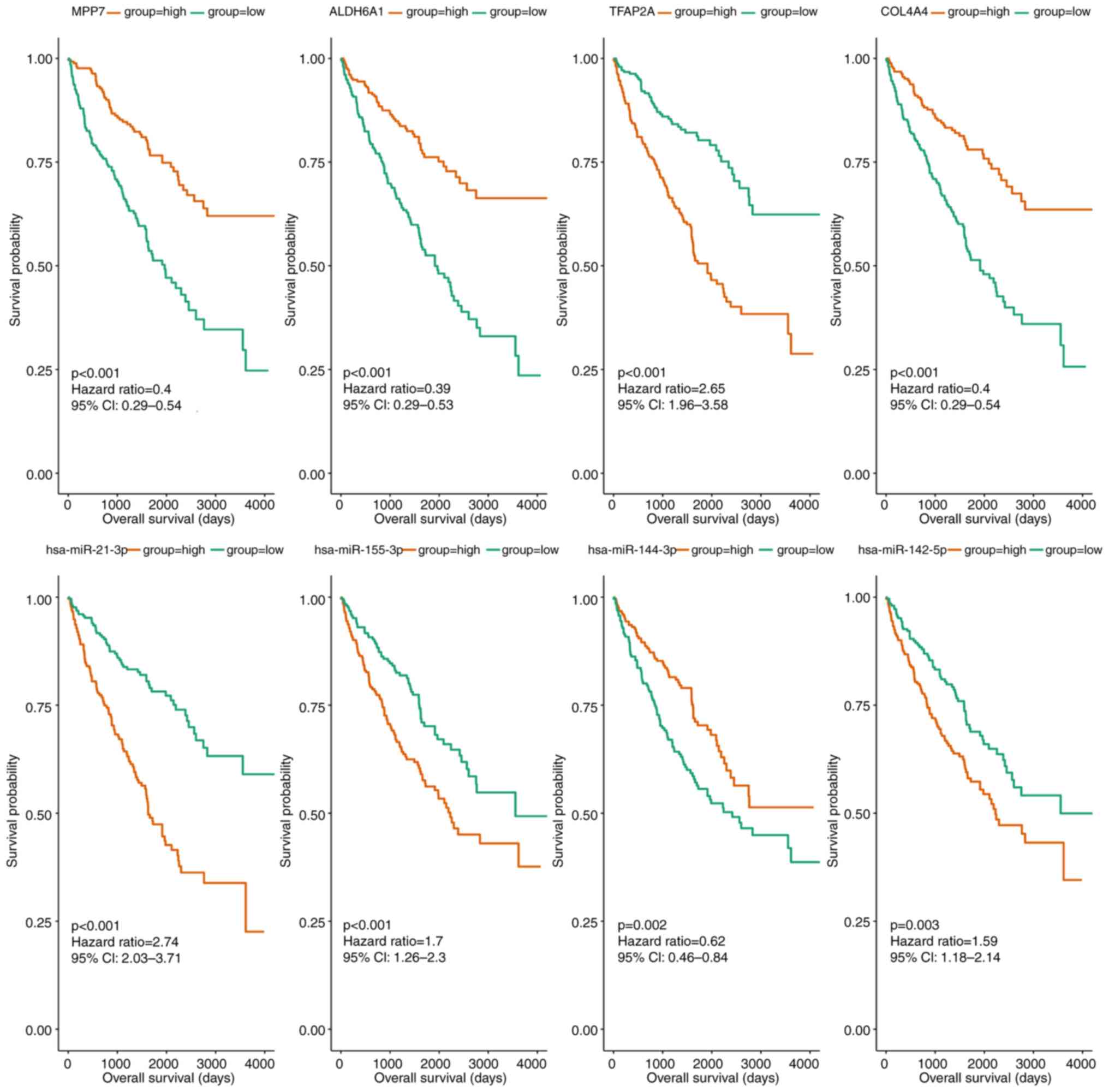|
1
|
Schmidt LS and Linehan WM: Genetic
predisposition to kidney cancer. Semin Oncol. 43:566–574. 2016.
View Article : Google Scholar : PubMed/NCBI
|
|
2
|
Morris MR and Latif F: The epigenetic
landscape of renal cancer. Nat Rev Nephrol. 13:47–60. 2017.
View Article : Google Scholar : PubMed/NCBI
|
|
3
|
Moch H, Srigley J, Delahunt B, Montironi
R, Egevad L and Tan PH: Biomarkers in renal cancer. Virchows Arch.
464:359–365. 2014. View Article : Google Scholar : PubMed/NCBI
|
|
4
|
Dabestani S, Marconi L and Bex A:
Metastasis therapies for renal cancer. Curr Opin Urol. 26:566–572.
2016. View Article : Google Scholar : PubMed/NCBI
|
|
5
|
Lu CH, Ou YC, Huang LH, Weng WC, Chang YK,
Chen HL, Hsu CY and Tung MC: Early dutasteride monotherapy in
patients with elevated serum prostate-specific antigen levels
following robot-assisted radical prostatectomy. Front Oncol.
9:6912019. View Article : Google Scholar : PubMed/NCBI
|
|
6
|
Corgna E, Betti M, Gatta G, Roila F and De
Mulder PH: Renal cancer. Crit Rev Oncol Hematol. 64:247–262. 2007.
View Article : Google Scholar : PubMed/NCBI
|
|
7
|
Zhao ZJ and Shen J: Circular RNA
participates in the carcinogenesis and the malignant behavior of
cancer. RNA Biol. 14:514–521. 2017. View Article : Google Scholar : PubMed/NCBI
|
|
8
|
Salzman J: Circular RNA expression: Its
potential regulation and function. Trends Genet. 32:309–316. 2016.
View Article : Google Scholar : PubMed/NCBI
|
|
9
|
Meng X, Li X, Zhang P, Wang J, Zhou Y and
Chen M: Circular RNA: An emerging key player in RNA world. Brief
Bioinform. 18:547–557. 2017.PubMed/NCBI
|
|
10
|
Zhang HD, Jiang LH, Sun DW, Hou JC and Ji
ZL: CircRNA: A novel type of biomarker for cancer. Breast Cancer.
25:1–7. 2018. View Article : Google Scholar : PubMed/NCBI
|
|
11
|
Ebbesen KK, Hansen TB and Kjems J:
Insights into circular RNA biology. RNA Biol. 14:1035–1045. 2017.
View Article : Google Scholar : PubMed/NCBI
|
|
12
|
Wang K, Sun Y, Tao W, Fei X and Chang C:
Androgen receptor (AR) promotes clear cell renal cell carcinoma
(ccRCC) migration and invasion via altering the
circHIAT1/miR-195-5p/29a-3p/29c-3p/CDC42 signals. Cancer Lett.
394:1–12. 2017. View Article : Google Scholar : PubMed/NCBI
|
|
13
|
Wang G, Xue W, Jian W, Liu P, Wang Z, Wang
C, Li H, Yu Y, Zhang D and Zhang C: The effect of Hsa_circ_0001451
in clear cell renal cell carcinoma cells and its relationship with
clinicopathological features. J Cancer. 9:3269–3277. 2018.
View Article : Google Scholar : PubMed/NCBI
|
|
14
|
Xiong Y, Zhang J and Song C: CircRNA
ZNF609 functions as a competitive endogenous RNA to regulate FOXP4
expression by sponging miR-138-5p in renal carcinoma. J Cell
Physiol. 234:10646–10654. 2019. View Article : Google Scholar : PubMed/NCBI
|
|
15
|
Xia S, Feng J, Chen K, Ma Y, Gong J, Cai
F, Jin Y, Gao Y, Xia L, Chang H, et al: CSCD: A database for
cancer-specific circular RNAs. Nucleic Acids Res. 46:D925–D929.
2018. View Article : Google Scholar : PubMed/NCBI
|
|
16
|
The Gene Ontology (GO) project in 2006.
Nucleic Acids Res. 34:D322–D326. 2006. View Article : Google Scholar : PubMed/NCBI
|
|
17
|
Kanehisa M and Goto S: KEGG: Kyoto
encyclopedia of genes and genomes. Nucleic Acids Res. 28:27–30.
2000. View Article : Google Scholar : PubMed/NCBI
|
|
18
|
Sanchez-Mejias A and Tay Y: Competing
endogenous RNA networks: Tying the essential knots for cancer
biology and therapeutics. J Hematol Oncol. 8:302015. View Article : Google Scholar : PubMed/NCBI
|
|
19
|
D'Uva G and Lauriola M: Towards the
emerging crosstalk: ERBB family and steroid hormones. Semin Cell
Dev Biol. 50:143–152. 2016. View Article : Google Scholar : PubMed/NCBI
|
|
20
|
Huynh TP, Barwe SP, Lee SJ, McSpadden R,
Franco OE, Hayward SW, Damoiseaux R, Grubbs SS, Petrelli NJ and
Rajasekaran AK: Glucocorticoids suppress renal cell carcinoma
progression by enhancing Na,K-ATPase beta-1 subunit expression.
PLoS One. 10:e01224422015. View Article : Google Scholar : PubMed/NCBI
|
|
21
|
Feldman RD, Ding Q, Hussain Y, Limbird LE,
Pickering JG and Gros R: Aldosterone mediates metastatic spread of
renal cancer via the G protein-coupled estrogen receptor (GPER).
FASEB J. 30:2086–2096. 2016. View Article : Google Scholar : PubMed/NCBI
|
|
22
|
Zhong X, Drgonova J, Li CY and Uhl GR:
Human cell adhesion molecules: Annotated functional subtypes and
overrepresentation of addiction-associated genes. Ann N Y Acad Sci.
1349:83–95. 2015. View Article : Google Scholar : PubMed/NCBI
|
|
23
|
Nagata M, Sakurai-Yageta M, Yamada D, Goto
A, Ito A, Fukuhara H, Kume H, Morikawa T, Fukayama M, Homma Y and
Murakami Y: Aberrations of a cell adhesion molecule CADM4 in renal
clear cell carcinoma. Int J Cancer. 130:1329–1337. 2012. View Article : Google Scholar : PubMed/NCBI
|
|
24
|
He W, Li X, Xu S, Ai J, Gong Y, Gregg JL,
Guan R, Qiu W, Xin D, Gingrich JR, et al: Aberrant methylation and
loss of CADM2 tumor suppressor expression is associated with human
renal cell carcinoma tumor progression. Biochem Biophys Res Commun.
435:526–532. 2013. View Article : Google Scholar : PubMed/NCBI
|
|
25
|
Dalgin GS, Drever M, Williams T, King T,
DeLisi C and Liou LS: Identification of novel epigenetic markers
for clear cell renal cell carcinoma. J Urol. 180:1126–1130. 2008.
View Article : Google Scholar : PubMed/NCBI
|
|
26
|
Zhao Z, Zhang M, Duan X, Deng T, Qiu H and
Zeng G: Low NR3C2 levels correlate with aggressive features and
poor prognosis in non-distant metastatic clear-cell renal cell
carcinoma. J Cell Physiol. 233:6825–6838. 2018. View Article : Google Scholar : PubMed/NCBI
|
|
27
|
Nouhaud FX, Blanchard F, Sesboue R, Flaman
JM, Sabourin JC, Pfister C and Di Fiore F: Clinical relevance of
gene copy number variation in metastatic clear cell renal cell
carcinoma. Clin Genitourin Cancer. 16:e795–e805. 2018. View Article : Google Scholar : PubMed/NCBI
|
|
28
|
An F, Liu Y and Hu Y: miR-21 inhibition of
LATS1 promotes proliferation and metastasis of renal cancer cells
and tumor stem cell phenotype. Oncol Lett. 14:4684–4688. 2017.
View Article : Google Scholar : PubMed/NCBI
|
|
29
|
Bera A, Ghosh-Choudhury N, Dey N, Das F,
Kasinath BS, Abboud HE and Choudhury GG: NFκB-mediated cyclin D1
expression by microRNA-21 influences renal cancer cell
proliferation. Cell Signal. 25:2575–2586. 2013. View Article : Google Scholar : PubMed/NCBI
|
|
30
|
Yuan H, Xin S, Huang Y, Bao Y, Jiang H,
Zhou L, Ren X, Li L, Wang Q and Zhang J: Downregulation of PDCD4 by
miR-21 suppresses tumor transformation and proliferation in a nude
mouse renal cancer model. Oncol Lett. 14:3371–3378. 2017.
View Article : Google Scholar : PubMed/NCBI
|
|
31
|
Gao Y, Ma X, Yao Y, Li H, Fan Y, Zhang Y,
Zhao C, Wang L, Ma M, Lei Z and Zhang X: miR-155 regulates the
proliferation and invasion of clear cell renal cell carcinoma cells
by targeting E2F2. Oncotarget. 7:20324–20337. 2016.PubMed/NCBI
|
|
32
|
Wei RJ, Zhang CH and Yang WZ: MiR-155
affects renal carcinoma cell proliferation, invasion and apoptosis
through regulating GSK-3β/β-catenin signaling pathway. Eur Rev Med
Pharmacol Sci. 21:5034–5041. 2017.PubMed/NCBI
|
|
33
|
Xiao W, Lou N, Ruan H, Bao L, Xiong Z,
Yuan C, Tong J, Xu G, Zhou Y, Qu Y, et al: Mir-144-3p promotes cell
proliferation, metastasis, sunitinib resistance in clear cell renal
cell carcinoma by downregulating ARID1A. Cell Physiol Biochem.
43:2420–2433. 2017. View Article : Google Scholar : PubMed/NCBI
|
|
34
|
Lou N, Ruan AM, Qiu B, Bao L, Xu YC, Zhao
Y, Sun RL, Zhang ST, Xu GH, Ruan HL, et al: miR-144-3p as a novel
plasma diagnostic biomarker for clear cell renal cell carcinoma.
Urol Oncol. 35:36.e7–36.e14. 2017. View Article : Google Scholar
|
|
35
|
Salzman J, Chen RE, Olsen MN, Wang PL and
Brown PO: Cell-type specific features of circular RNA expression.
PLoS Genet. 9:e10037772013. View Article : Google Scholar : PubMed/NCBI
|
|
36
|
Jeck WR, Sorrentino JA, Wang K, Slevin MK,
Burd CE, Liu J, Marzluff WF and Sharpless NE: Circular RNAs are
abundant, conserved, and associated with ALU repeats. RNA.
19:141–157. 2013. View Article : Google Scholar : PubMed/NCBI
|
|
37
|
Rybak-Wolf A, Stottmeister C, Glažar P,
Jens M, Pino N, Giusti S, Hanan M, Behm M, Bartok O, Ashwal-Fluss
R, et al: Circular RNAs in the mammalian brain are highly abundant,
conserved, and dynamically expressed. Mol Cell. 58:870–885. 2015.
View Article : Google Scholar : PubMed/NCBI
|
|
38
|
Memczak S, Jens M, Elefsinioti A, Torti F,
Krueger J, Rybak A, Maier L, Mackowiak SD, Gregersen LH, Munschauer
M, et al: Circular RNAs are a large class of animal RNAs with
regulatory potency. Nature. 495:333–338. 2013. View Article : Google Scholar : PubMed/NCBI
|
|
39
|
Zhang Y, Zhang XO, Chen T, Xiang JF, Yin
QF, Xing YH, Zhu S, Yang L and Chen LL: Circular intronic long
noncoding RNAs. Mol Cell. 51:792–806. 2013. View Article : Google Scholar : PubMed/NCBI
|


















